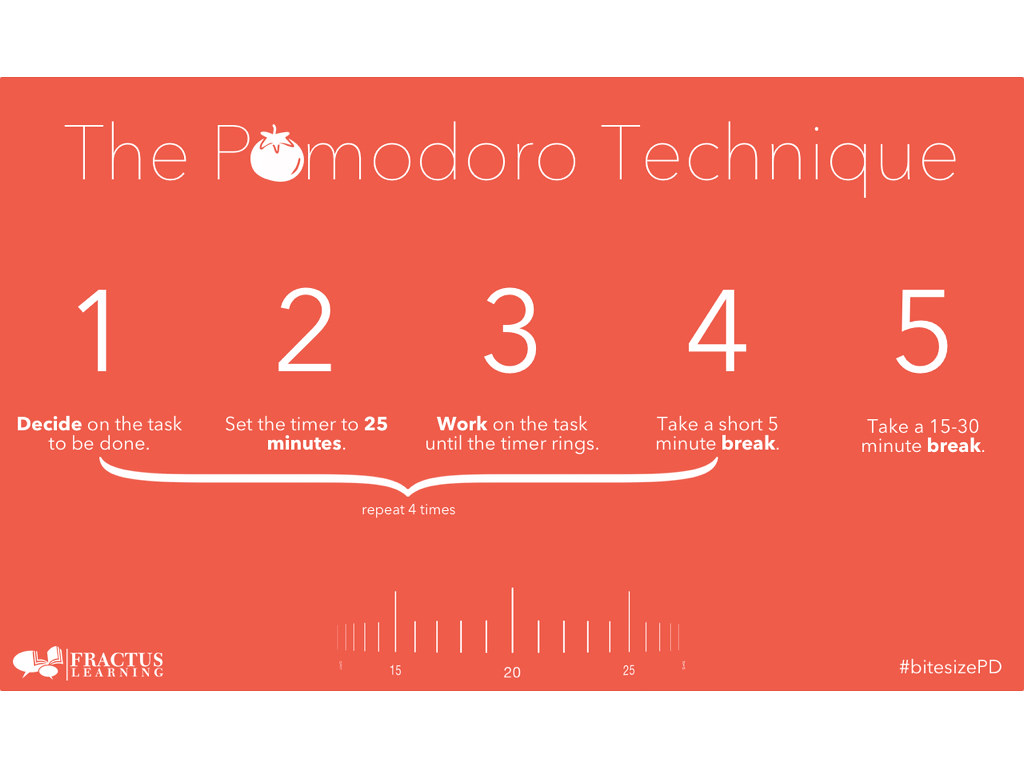Ever found yourself working tirelessly, only to realize you’re running on fumes? The Pomodoro Technique might just be the game-changer you need. This simple yet effective time management method helps you work with time, rather than against it. In this blog post, we’ll dive into what the Pomodoro Technique is, explore its benefits, walk through a step-by-step guide on how to implement it, and recommend some handy tools and timers to get you started. Let’s get productive!
Overview of the Pomodoro Technique
The Pomodoro Technique was developed in the late 1980s by Francesco Cirillo. Named after the Italian word for “tomato”—thanks to the tomato-shaped kitchen timer Cirillo used—it’s a method designed to help people stay productive and focused. The idea is straightforward: work in short, focused intervals (typically 25 minutes) called “Pomodoros,” followed by short breaks. After completing four Pomodoros, a longer break is taken. This approach helps maintain high productivity levels while preventing the burnout that often comes from prolonged, unbroken work sessions.
Real-Life Examples of the Pomodoro Technique
Different professionals use the Pomodoro Technique in various ways, depending on their needs. For example, a writer might use Pomodoros to draft chapters, breaking the writing process into manageable chunks and avoiding the overwhelming feeling of having to write an entire book at once. A student might use Pomodoros to study different subjects, dedicating each 25-minute session to a specific topic like math, science, or history. Meanwhile, a software developer could use Pomodoros to tackle coding tasks, debugging in focused intervals, and then taking a break to prevent mental fatigue.
Benefits of Using the Pomodoro Technique
Using the Pomodoro Technique can significantly enhance how you approach work and manage your time. Research supports this—studies have shown that by working in short, timed intervals, you can sustain attention and reduce the risk of cognitive fatigue. For example, a study by the University of Illinois found that taking short breaks can improve concentration by up to 60%. By dedicating just 25 minutes to a single task, you eliminate distractions, which allows you to dive deep into your work. This concentrated effort not only leads to better quality work but also helps you accomplish tasks more efficiently.
Another key benefit is stress reduction. The frequent breaks built into the Pomodoro Technique give your brain the necessary downtime to recharge. This not only keeps you fresh and motivated throughout the day but also contributes to better mental well-being by preventing burnout. Research from the Journal of Occupational Health Psychology has found that taking regular breaks can reduce stress and improve overall mood, which aligns perfectly with the principles of the Pomodoro Technique.
Moreover, the Pomodoro Technique can be a powerful tool against procrastination. The structured intervals make large tasks feel more manageable, which reduces the overwhelming nature that often leads to putting things off. By committing to just 25 minutes of focused work, you can overcome the initial resistance to starting a task. This sense of accomplishment after each completed Pomodoro boosts your morale, making you feel more productive and in control of your time.
The Science Behind the Pomodoro Technique
The effectiveness of the Pomodoro Technique is rooted in how our brains handle attention and cognitive load. Our brains are not designed to maintain prolonged focus on a single task for hours at a time. Instead, they thrive on periods of intense focus followed by rest. The Pomodoro Technique leverages this natural rhythm by structuring work in short bursts, which aligns with the brain’s capacity for focus. Neuropsychological studies show that taking breaks helps the brain consolidate information and refresh attention spans, making each work session more productive.
Step-by-Step Guide to Implementing the Pomodoro Technique
Ready to give the Pomodoro Technique a try? Here’s a simple step-by-step guide to get you started:
- Choose a Task: Start by selecting a task you need to work on. It can be anything from writing a report to studying for an exam or even cleaning your workspace.
- Set a Timer for 25 Minutes: Once you’ve chosen your task, set a timer for 25 minutes. This is your Pomodoro. During this time, focus solely on the task at hand. Try to avoid any distractions—put your phone on silent, close unnecessary tabs on your computer, and let others know you’re in focus mode.
- Work on the Task: Work steadily and consistently for the entire 25 minutes. If you get distracted or interrupted, gently remind yourself to get back to the task.
- Take a Short Break: When the timer goes off, take a short break—about 5 minutes. Use this time to stretch, grab a coffee, or just relax. The key is to take your mind off work and let it rest.
- Repeat: After your break, reset the timer and start another Pomodoro. After completing four Pomodoros, take a longer break, around 15-30 minutes. This gives you a chance to recharge before diving back into your tasks.

Customizing the Pomodoro Technique
Not everyone finds the standard 25/5 Pomodoro split effective. It’s important to remember that the Pomodoro Technique is flexible. You can adjust the intervals to fit your needs. For example, some people prefer longer work sessions of 50 minutes with 10-minute breaks, while others might find that shorter, 15-minute intervals with 3-minute breaks work best for them. Experiment with different timings to discover what helps you maintain the best focus and energy levels.
Overcoming Common Challenges
Even with the best intentions, staying disciplined during Pomodoro sessions can be challenging. Distractions are everywhere—emails, phone calls, social media, or even your thoughts. One way to handle distractions is to keep a notepad handy. If you think of something important while working, jot it down and return to it later.
Another challenge is sticking to the break schedule. It can be tempting to skip breaks, especially if you’re on a roll. However, skipping breaks defeats the purpose of the Pomodoro Technique. Remember, breaks are what make the technique effective, allowing your mind to rest and reset. Treat breaks as essential parts of the process, not optional extras.
Integrating Pomodoros with Other Techniques
For those looking to maximize productivity, the Pomodoro Technique can be combined with other time management strategies. For example, pairing it with the Eisenhower Matrix helps prioritize tasks by urgency and importance, ensuring that you focus on what truly matters. Alternatively, the Getting Things Done (GTD) method can be used alongside Pomodoros to break down large projects into actionable tasks, making the work more manageable and less daunting.
Recommended Tools and Timers for Pomodoro Sessions
To make the most of the Pomodoro Technique, having the right tools can be helpful. There are plenty of Pomodoro timers available online, ranging from simple apps to advanced software with additional features. Some popular options include the Focus Booster and TomatoTimer, both of which offer easy-to-use interfaces that help you keep track of your Pomodoros and breaks.
For those who prefer a physical timer, consider using a classic kitchen timer or even a dedicated Pomodoro timer available on various e-commerce platforms. The visual and auditory cues of a ticking timer can often help reinforce your commitment to the task.
If you’re looking for a more integrated approach, consider productivity apps like Toggl or Forest. These apps not only provide a Pomodoro timer but also include features to track your productivity and minimize distractions. With these tools, you can effectively manage your time and tasks, making the Pomodoro Technique an integral part of your daily routine.
Summary and Key Takeaways
The Pomodoro Technique is a simple yet powerful tool to enhance your productivity and manage your time more effectively. By breaking your work into manageable intervals and taking regular breaks, you can stay focused, avoid burnout, and make steady progress on your tasks. Research shows that this method not only boosts productivity but also contributes to better mental well-being. Whether you’re new to time management techniques or looking for a fresh way to boost your productivity, the Pomodoro Technique is worth a try. So grab a timer, pick a task, and get started on your first Pomodoro today!


Leave a Reply